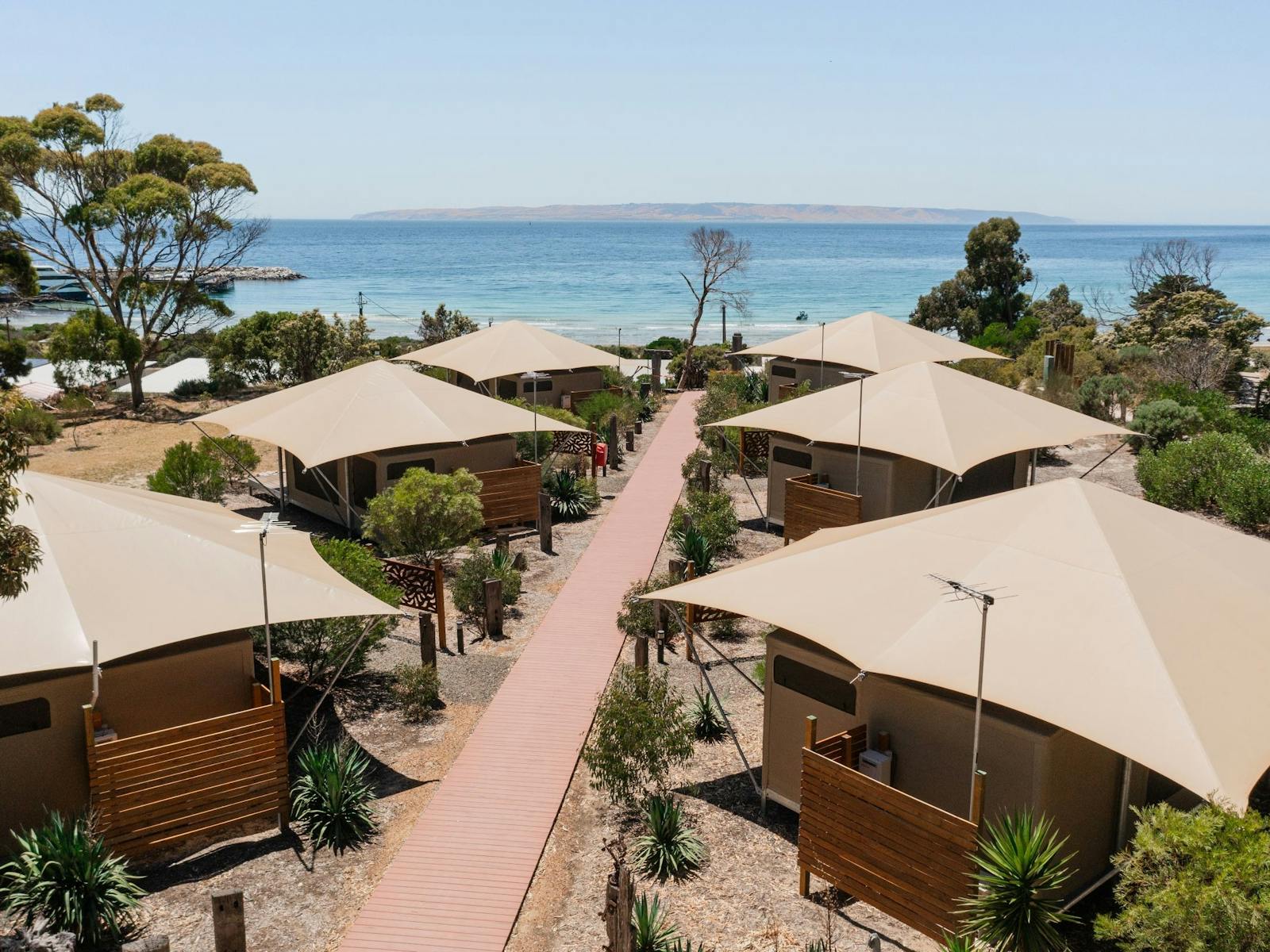Kangaroo Island has a special subspecies of the endangered Glossy Black-cockatoo that exists nowhere else. Due to the loss of nesting and feeding habitat over many years, the population declined to less than 200 birds on the Island by 1996. A Recovery Program has been doing magnificent work to help the population recover and grow in numbers to around 450 birds. The 2019-2020 bushfires had a massive impact on this special population. About 75 percent of the endangered Glossy Black-cockatoo population lived in the bushfire-impacted area and a significant percentage of its known feeding habitat was burnt. Many of the flocks that habited these areas have moved further east in search of new feeding sites. Recovery actions are continuing with the building and protection of nesting sites and planting of she-oak trees.
Kangaroo Island Glossy Black-cockatoo Facts
The Glossy is the smallest of Australia’s black cockatoos, measuring around 48 cm tall, with a stunning red tail. Adult female Glossy Black-cockatoos have distinct yellow markings on their neck and head, as well as black barring across their red tails, which can appear in shades of deep red to orange. Adult males have a dark black-brown head and no barring on their red tail.
They prefer woodlands dominated by Drooping She-oak for feeding and stands of tall Sugar Gum forest for nesting in hollows. Glossy Black-cockatoo habitat occurs on the western end of the island, where pre-bushfires accounted for around 75% of the population, and is now recovering habitat. There are also areas of habitat in and around American River, Penneshaw, and areas dotted along the North Coast.
Breeding season for Glossy Black-cockatoos occurs between January and September, with birds tending to pair for life. Hatchlings are yellow balls of fluff, fed by their parents, growing to a fledgling by Spring, and dependent on their parents for around 12 months. As Glossy Black-cockatoos are critically endangered it is extra important they are not disturbed at nesting sites, please help protect them by viewing from a distance of at least 30 meters.
Where to find them
Glossy Black-cockatoos feed during the day returning to their nests at dusk. During the day they feed in Casuarina trees, on she-oak cones. A great sign that they may be near is the ‘chewings’ they leave behind, a sprinkling of pieces of the cones that are discarded on the ground as feeding cockatoos pick out the tasty seeds. Around dusk, flocks return to Sugar Gum nesting habitat, where they roost in natural hollows or manmade nesting boxes.
The Glossy Black-cockatoo habitat on the western end of the Island was significantly impacted by the summer 2019-2020 bushfires. The best place to view them is on the eastern reaches of the Island in Penneshaw between Hog Bay beach and Baudin Conservation Park, and American River, near the hotel precinct. Talk to a local, and they will point you in the right direction. Wander quietly along the walking trail and listen for the birds perched in trees feeding during the day, cracking she-oak cones or at dusk listen for their calls as you sit quietly nearby awaiting the return. You will hear their distinctive call first and if you are lucky see a flash of their brilliant red tail as they come into land on a branch high in the treetops.
For the best chance of viewing these critically endangered birds, book a tour with an expert local guide.
How to watch them
Glossy Black-cockatoos are rare and timid, making them a challenge to view. Find a quiet spot in the she-oak forest and listen for signs of the birds. Quietly observe them from a distance and you will be content with the experience of watching these rare birds feed amongst the distinct she-oak foliage. In the evening find a quiet clear spot in the Sugar Gum forest and await the drawn-out croaky call of the flock as they return to the safety of tree hollows and nesting boxes in the evenings.
Did you know?
Glossy Black-cockatoos are especially fussy eaters feeding only on seed kernels from Drooping She-oaks and only on particular trees within a forest. Research has proven that they prefer she-oaks growing on specific soil types and only choosing cones with a good fill of seed. Did you also know that all Glossy Black-cockatoos only hold she-oak cones with their left foot? No sightings have been made with the bird holding the cone in their right foot – there is your challenge!
Recovery Program- How to get involved
You can donate to the Recovery Program. Donations go towards activities such as propagating and planting sheoaks or protecting nest trees from predation.
At times during the year, volunteering opportunities are available. In winter there are planting days to help plant sheoaks for glossies, and for one week in Spring an annual population census is conducted.
Find out More















